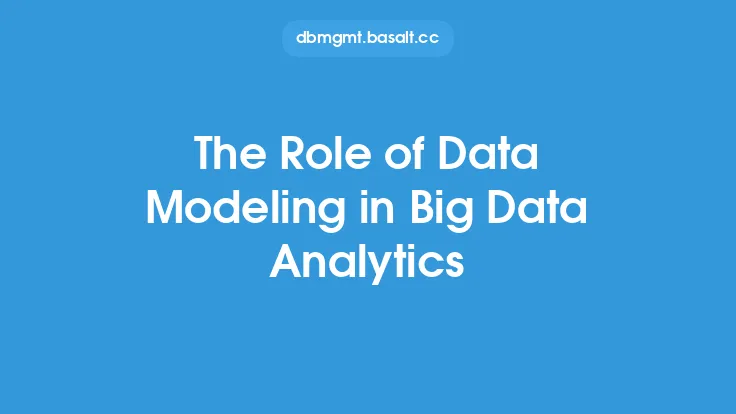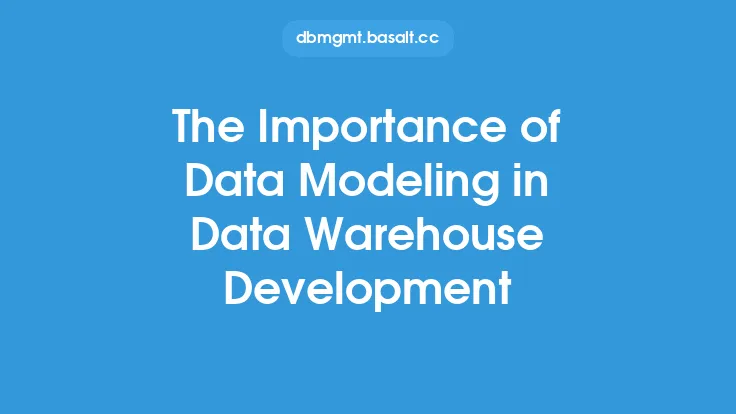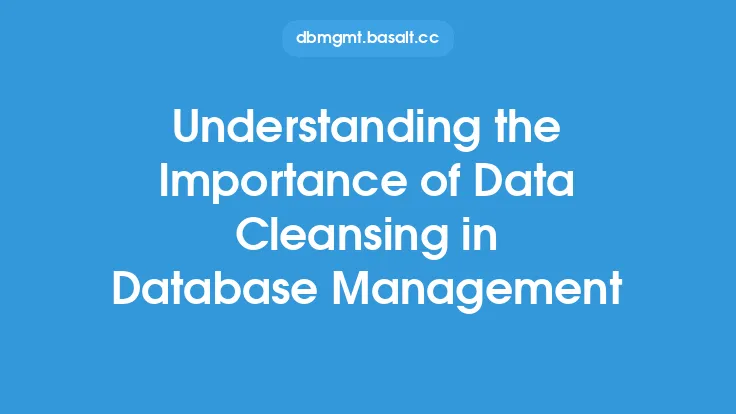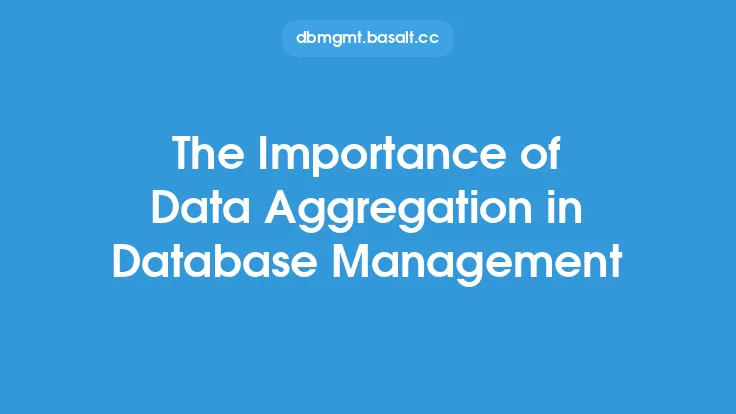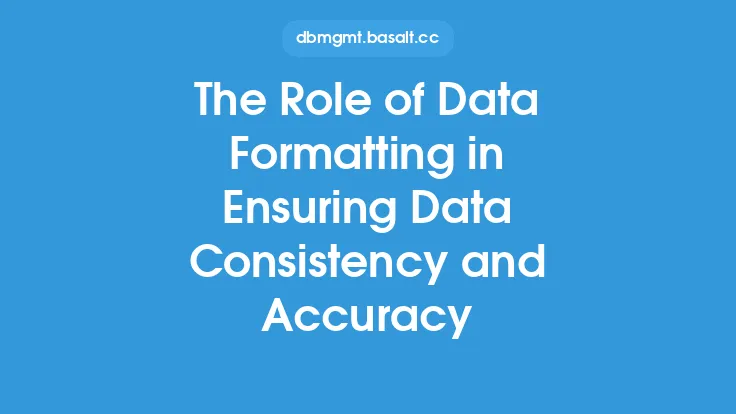In the realm of big data analytics, the sheer volume, velocity, and variety of data can be overwhelming, making it challenging to extract valuable insights. This is where data transformation comes into play, serving as a crucial step in preparing data for analysis. Data transformation refers to the process of converting data from its raw, unprocessed form into a more refined, organized, and structured format that can be easily analyzed and interpreted. The importance of data transformation in big data analytics cannot be overstated, as it enables organizations to unlock the full potential of their data and make informed decisions.
What is Data Transformation?
Data transformation involves a series of processes that aim to improve the quality, consistency, and reliability of data. This includes data cleaning, data normalization, data aggregation, and data formatting, among others. The goal of data transformation is to create a unified, standardized, and consistent dataset that can be used for analysis, reporting, and decision-making. By transforming data into a more usable format, organizations can reduce errors, improve data integrity, and increase the accuracy of their analytics.
Benefits of Data Transformation
The benefits of data transformation are numerous and significant. Firstly, it enables organizations to improve the quality of their data, which is essential for making informed decisions. By removing errors, inconsistencies, and duplicates, data transformation helps to ensure that data is accurate, complete, and reliable. Secondly, data transformation facilitates data integration, allowing organizations to combine data from multiple sources and create a unified view of their business. This, in turn, enables organizations to gain a deeper understanding of their customers, markets, and operations. Finally, data transformation enables organizations to improve the performance of their analytics systems, as transformed data can be processed and analyzed more efficiently.
Data Transformation Techniques
There are several data transformation techniques that organizations can use to prepare their data for analysis. These include data aggregation, data normalization, data formatting, and data feature engineering, among others. Data aggregation involves combining data from multiple sources into a single, unified dataset. Data normalization involves scaling numeric data to a common range, usually between 0 and 1, to prevent differences in scales from affecting the analysis. Data formatting involves converting data into a standard format, such as CSV or JSON, to facilitate analysis and reporting. Data feature engineering involves creating new features or variables from existing data to improve the accuracy and robustness of analytics models.
Data Transformation Tools and Technologies
There are several data transformation tools and technologies that organizations can use to transform their data. These include data integration platforms, data transformation software, and big data processing frameworks, among others. Data integration platforms, such as Informatica and Talend, provide a comprehensive set of tools for data transformation, data integration, and data quality management. Data transformation software, such as Trifacta and Paxata, provide a user-friendly interface for data transformation, data cleaning, and data formatting. Big data processing frameworks, such as Apache Hadoop and Apache Spark, provide a scalable and flexible platform for data transformation, data processing, and data analysis.
Challenges and Best Practices
Despite the importance of data transformation, there are several challenges that organizations may face when transforming their data. These include data quality issues, data complexity, and data scalability, among others. To overcome these challenges, organizations should follow best practices for data transformation, such as data standardization, data validation, and data testing. Data standardization involves establishing a common set of standards and formats for data transformation. Data validation involves checking data for errors and inconsistencies before transformation. Data testing involves verifying the accuracy and quality of transformed data before analysis.
Conclusion
In conclusion, data transformation is a critical step in big data analytics, enabling organizations to unlock the full potential of their data and make informed decisions. By transforming data into a more refined, organized, and structured format, organizations can improve the quality, consistency, and reliability of their data, facilitate data integration, and improve the performance of their analytics systems. As the volume, velocity, and variety of data continue to grow, the importance of data transformation will only continue to increase, making it essential for organizations to invest in data transformation tools, technologies, and best practices. By doing so, organizations can gain a deeper understanding of their customers, markets, and operations, and make better decisions to drive business success.
